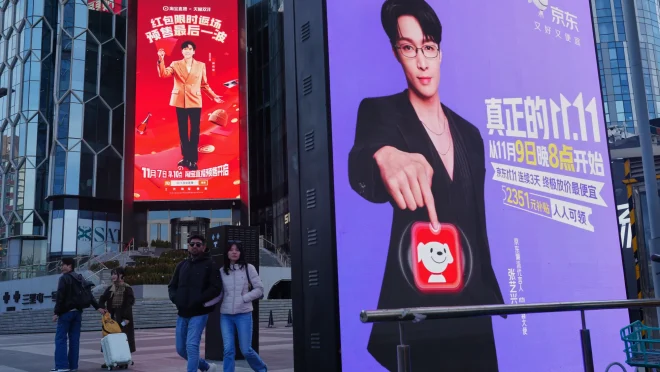World Singles’ Day and 11.11: The billion-dollar business of singlehood
World Singles’ Day and 11.11: The billion-dollar business of singlehood

At the stroke of midnight on 11 November, millions of shoppers around the world prepare for a digital marathon. Fingers hover over smartphones. Carts fill in seconds. Designer handbags, smartphones and gaming consoles vanish from virtual shelves. By the end of the day, billions of dollars have been spent.
This is Singles’ Day, the world’s biggest shopping event — a phenomenon that began as a light-hearted celebration of single life and evolved into a cornerstone of global e-commerce.
What started as a playful student ritual in the 1990s has become a marketing spectacle that outpaces Black Friday and Cyber Monday combined. Every year, 11 November — a date chosen for its four solitary digits, 11/11 — turns into a global reminder of how even solitude can be monetised.
A student idea that sparked a global trend
Singles’ Day traces its roots back to Nanjing University in 1993. A small group of single male students decided to reclaim their status by organising informal gatherings, meals and games. They called it Guanggun Jie — literally “Bare Branches Day”, a reference to unmarried men in Chinese slang.
The gatherings were meant to be light-hearted and communal, a way to celebrate independence in a society that often equated adulthood with marriage. Fried dough sticks — thin, upright and shaped like the number one — became a symbolic snack.
Over time, the idea spread across campuses and cities. By the early 2000s, it had become part of China’s growing youth culture — self-aware and increasingly digital. Then, in 2009, China’s largest e-commerce company, Alibaba, turned it into something much bigger.
From campus joke to commercial giant
Alibaba’s leadership saw potential in turning 11 November into an online shopping festival. The company launched the first Singles’ Day sale through its Tmall platform, offering discounts across hundreds of brands.
That year’s sales totalled just under $8 million — modest by today’s standards but significant for a first attempt. Within a decade, the event had become a retail juggernaut. In 2019, Alibaba reported $38.4 billion in sales in a single day.
What began as a campaign to boost online shopping during the off-season grew into a nationwide — and now global — event. Today, Singles’ Day features celebrity performances, livestreamed product showcases and countdown galas broadcast to millions. The festival has become a blend of entertainment, technology and consumption, carefully engineered to drive spending.
Loneliness as a market
The success of Singles’ Day reflects wider social and demographic changes. Across Asia and beyond, more people are living alone than ever before. In China, there are more than 240 million single adults. Similar patterns are seen in Japan, South Korea and Western nations.
Rather than seeing this as a challenge, marketers saw an opportunity. The event’s message — celebrate yourself — resonated with a generation comfortable with digital life and personal independence. Advertising slogans such as “Treat yourself” and “You deserve it” positioned shopping as a form of self-care.
In doing so, Singles’ Day transformed emotional experience into economic behaviour. What began as a social expression of being single became a commercial ecosystem worth tens of billions of dollars — a model soon replicated by competitors like JD.com, Pinduoduo, and later, Western platforms such as Amazon and ASOS.
Even in South Asia, e-commerce firms have adopted the format. In Bangladesh, platforms like Daraz now run extensive 11.11 campaigns, drawing millions of online buyers each year.
A global ritual for the digital age
Singles’ Day is now one of the most recognisable fixtures of the global retail calendar. Like Valentine’s Day or Black Friday, it blurs the line between emotion and economics. But it also mirrors the technological era in which it thrives — data-driven, interactive and intensely personalised.
Every click feeds into a vast feedback loop of algorithms and targeted marketing. Livestreaming hosts engage audiences in real time, while artificial intelligence predicts what products shoppers are most likely to buy next.
Yet beneath the data lies something more familiar — the human search for connection. In a hyperconnected but often isolating world, the act of buying can momentarily fill the emotional gap. The glow of a phone screen, the thrill of a parcel arriving — these small rituals turn solitude into participation.
What comes next
After years of record-breaking growth, Singles’ Day may be entering a period of adjustment. With global economic uncertainty and growing concern over consumer fatigue, Alibaba has shifted its messaging away from total sales toward sustainability and customer loyalty.
Younger consumers are also changing their habits. Many now favour “rational consumption” — spending less impulsively and choosing quality or ethical brands over sheer quantity. Some are even rejecting shopping festivals altogether, opting instead for digital minimalism or thrift culture.
Still, the influence of Singles’ Day remains immense. It has redefined how companies market to emotion, how consumers express identity through purchases, and how technology mediates the experience of solitude.
From a student dormitory idea to a multi-billion-dollar enterprise, Singles’ Day shows how personal sentiment can drive global commerce — and how, in the modern world, even loneliness has an economy.


